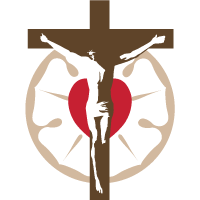It’s Jesus! Nearly everyone who sees the magnificent self-portrait of Dürer has the same reaction viewing it as an icon of Christ Himself. Why is this? What was Dürer trying to achieve? He obviously put a great deal of time, thought, and skill into the painting, but what was his purpose?
Sources of the Augsburg Confession
by Dr. Jack Kilcrease Philipp Melanchthon composed the Augsburg Confession in preparation for the Diet of Augsburg in 1530. The emperor Charles V called the diet in order to resolve the religious issues that were divided the empire. He sought unity in order to be able present a united front against the armies of the… Read More >
Luther and Calvin
by Rev. Matthew L.G. Zickler Anyone who has spent any small amount of time studying the history of the Reformation, or likewise the origin of Protestant Churches in America, has encountered the name of John Calvin. Calvin is considered by some the one who codified the Reformation in the form that it finally took and… Read More >
Luther and Zwingli
by Rev. Jesse Burns In the year 1529, two prominent theologians of the Reformation, along with a cast of important colleagues from both sides, came face to face in the city of Marburg, Germany for a discussion. This meeting is known as the Marburg Colloquy. The goal of the colloquy, largely organized by Phillip of… Read More >
Luther and Erasmus
by Rev. A. Brian Flamme There are few men of the 15th and 16th centuries that deserve our attention more than Erasmus Desiderius of Rotterdam. He represents the pinnacle of Christian humanism, an intellectual movement that revitalized classical and biblical scholarship north of the Alps. There is some confusion over the date of his birth… Read More >
“Come, Holy Ghost, God and Lord”
by Mr. Jonathan Swett Numerous treasures of the current body of Lutheran hymnody arose in the Reformation period, the chief contributor of which was Martin Luther. Several of these hymns have been explored over the course of this blog in anticipation of the 500th anniversary of the Reformation! Although “Come, Holy Ghost, God and Lord”… Read More >
The Four Holy Men: Albrecht Dürer’s Confession of Faith
by Deac. Carolyn Brinkley Both Lutherans and Roman Catholics claim Albrecht Dürer as their own. So what was he? Lutheran or Roman Catholic? Dürer’s life (1471-1528) spanned the tumultuous period of dynamic social, ecclesiastical, political, and theological change brought about by the Reformation. For years the artist gave visual expression to his ardent Roman Catholic… Read More >
Melanchthon’s Loci Communes
by Rev. Dr. Jason Lane Locus is the Latin word for “place”. Loci are places. And Loci Communes are common places where one may like to put things, either in the mind or in a book—organized, as if in a physical location, and easy to retrieve when needed. Many, including the ancients (and even Sherlock… Read More >
Political Allies of the Reformation
by Dr. Jack Kilcrease Martin Luther, along with John Calvin, Ulrich Zwingli, Martin Bucer, and Thomas Cranmer are often referred to as the “Magisterial Reformers.” By “magisterial” early modern historians typically mean that they reformed their respective regional churches with the help of local magistrates. Such a program stands in contrast with those figures often… Read More >
Indulgences Then and Now
by Rev. A. Brian Flamme The events of October 31st 1517, the day that Luther nailed his Ninety-Five Theses to the church door in Wittenberg, were not set in motion by a man’s ambitious vision to revolutionize the spirituality of the west. Nor were they set in motion by Luther’s iconoclastic vainglory that sought to… Read More >
